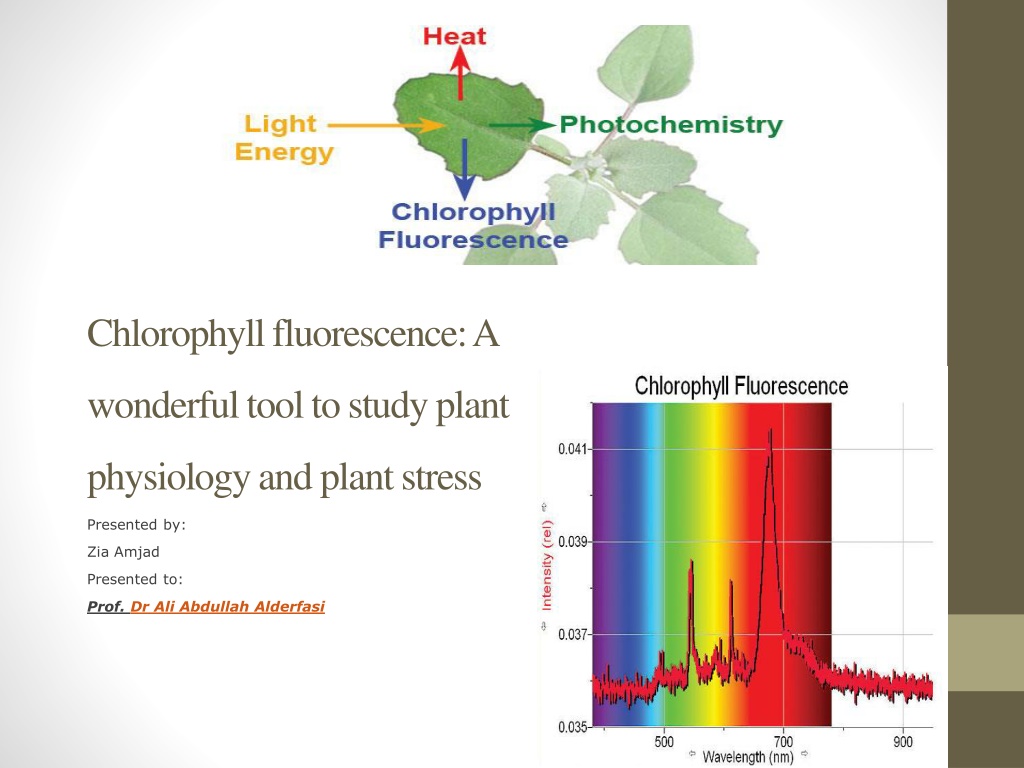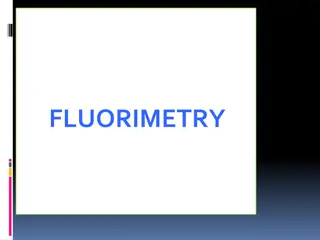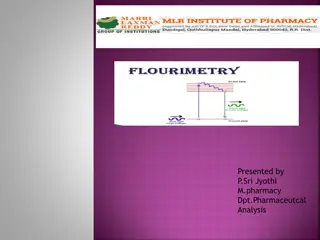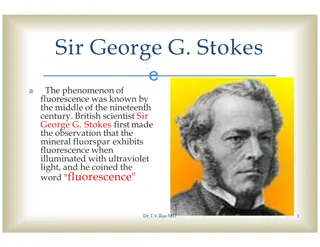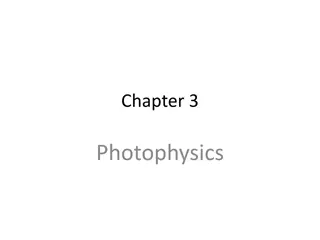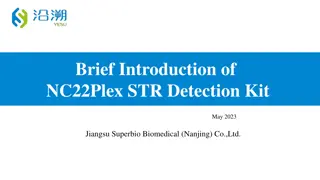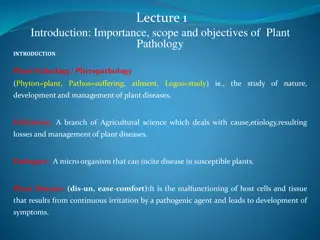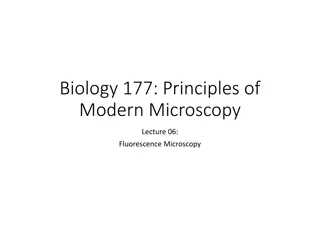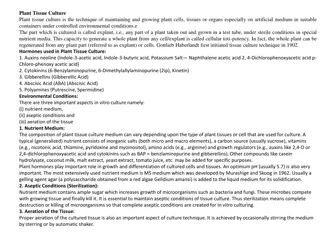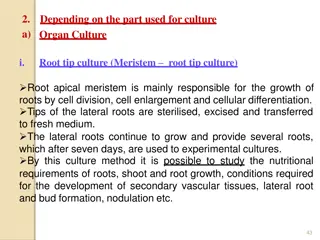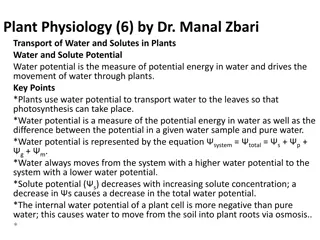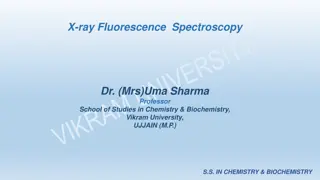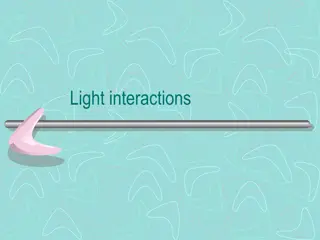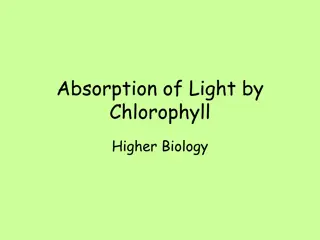Chlorophyll Fluorescence in Plant Physiology
Chlorophyll fluorescence is a powerful tool developed in the 1990s for studying plant physiology and stress. It provides insights into photosynthetic processes at different levels, from subcellular to canopy. By measuring chlorophyll fluorescence, researchers can assess the efficiency of photosynthesis and detect disruptions caused by stress factors. This technology has various applications in photosynthesis research, plant ecology, stress physiology, and more. The process involves the absorption and emission of light energy by chlorophyll, which can be utilized for photosynthesis, dissipated as heat, or re-emitted as red fluorescence. Understanding chlorophyll fluorescence yield helps in evaluating changes in photochemistry efficiency and heat dissipation.
Download Presentation

Please find below an Image/Link to download the presentation.
The content on the website is provided AS IS for your information and personal use only. It may not be sold, licensed, or shared on other websites without obtaining consent from the author.If you encounter any issues during the download, it is possible that the publisher has removed the file from their server.
You are allowed to download the files provided on this website for personal or commercial use, subject to the condition that they are used lawfully. All files are the property of their respective owners.
The content on the website is provided AS IS for your information and personal use only. It may not be sold, licensed, or shared on other websites without obtaining consent from the author.
E N D
Presentation Transcript
Chlorophyll fluorescence: A wonderful tool to study plant physiology and plant stress Presented by: Zia Amjad Presented to: Prof. Dr Ali Abdullah Alderfasi
Chlorophyll Fluorescence Plant chlorophyll fluorescence technology was developed in the 1990s. The variation in fluorescence can be shown by false color images or as numerical values from the photochemical reaction kinetics (quantum yield, fluorescence decline, non-photosynthetic quenching).
Chlorophyll Fluorescence Photosynthesis belongs to ones of the oldest photo-physical and biochemical processes on Earth. A large progress in the research of photosynthesizing organisms was achieved at the end of 20th century by the introduction of modern optical methods and techniques allowing to study photosynthetic processes ranging from the subcellular up to the plant canopy level. Chlorophyll (Chl) fluorescence: These techniques appeared to be a very powerful tool for studying of photochemical and non-photochemical processes within thylakoid membranes, chloroplasts, plant tissues, or whole plants.
ChlorophyllFluorescence Photosynthesis is the primary process by which plants synthesize food and maintain energy. As part of that process some energy is released as light or fluorescence, commonly in the chlorophyll pigment areas in the leaf. This chlorophyll fluorescence can be measured using the Chlorophyll Fluorescence meter to provide an inside look at the efficiency of the photosynthetic process or its disruption due to stress related factors. Applications: Photosynthesis research Plant ecology Stress physiology Terrestrial / aquatic plants Information from whole leaf to single cells Detecting phytotoxic compounds
Chlorophyll fluorescence measurements in plants by : J. Leipner Light energy that is absorbed by chlorophyll in a leaf can undergo three fates: a) It can be used to drive photosynthesis (photochemistry). b) It can be dissipated as heat. c) It can be re-emitted as red fluorescence. Absorption and emission spectrum of chlorophyll
Chlorophyll fluorescence measurements in plants by : J. Leipner These three process occur in competition. Any increase in the efficiency of one process will result in a decrease in the yield of the other two. Therefore, determining the yield of chlorophyll fluorescence will give information about changes in the efficiency of photochemistry and heat dissipation. Possible fates of excited chlorophyll
Measurement of chlorophyll fluorescence by the saturation pulse method (adapted from Van Kooten & Snell, 1990). The most useful and widely used chlorophyll fluorescence technique is the so- called quenching analysis of modulated fluorescence by the saturation pulse method. A leaf is dark adapted for at least 15 min (depending on temperature) prior to the measurement. Upon the application of a saturating flash (about 8000 mol m-2 s-1 for 0.6 - 1 s), fluorescence raises from the ground state value (Fo), which is the fluorescence determined in darkness by a weak measuring beam, to its maximum value, namely Fm. This measurement allows the determination of the maximum quantum efficiency of photosystem II (PSII) primary photochemistry, given as Fv/Fm
Need for understanding the basic theoretical principles of Chl-fluorescence Because the basic theoretical principle explains the emission of Chl-fluorescence and its connection with photochemical and non-photochemical processes working within thylakoid membranes under light excitation as well as physiological aspects of plant stress. Theoretical background: 1)- Thylakoid membrane and linear electron transport: Chlorophyll fluorescence is defined as The Chl fluorescence is a physical signal defined as a radiative energy evolved from deexciting Chl a molecules ( = 690 nm for PS II, = 740 nm for PS I) . OR Chlorophyll fluorescence is light that has been re-emitted after being absorbed by chlorophyll molecules of plant leaves. By measuring the intensity and nature of this fluorescence, plant ecophysiology can be investigated.
1)- Thylakoid membrane and linear electron transport: Brief structural overview of thylakoid membrane with a special respect to those components that may affect Chl-fluorescence signals.
